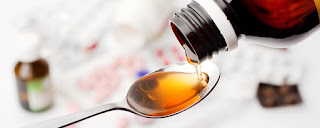An Overview of Different Types of Dosages in the Pharmaceutical Industry
Introduction:
In the pharmaceutical industry, the proper administration of medications is crucial for ensuring their effectiveness and safety. Dosage forms or pharmaceutical preparations play a significant role in delivering drugs to patients in a convenient and effective manner. Various dosage forms are available, each designed to meet specific therapeutic needs and patient preferences. In this blog, we will explore some of the most common types of dosages used in the pharmaceutical industry.
Tablets and Capsules:
Tablets and capsules are the most widely recognized and commonly used dosage forms. Tablets are solid oral dosage forms made by compressing medicinal substances with excipients. They are easy to handle, store, and administer. Capsules, on the other hand, are small containers made of gelatin or vegetable materials that enclose medication in powder or liquid form. They provide a convenient and precise way of administering drugs orally.Liquids and Suspensions:
Liquid dosage forms include solutions, syrups, elixirs, and suspensions. Solutions are homogeneous mixtures of one or more drugs dissolved in a liquid base. They are typically used for drugs that require rapid absorption or precise dosing. Syrups are concentrated solutions with a high sugar content, often used for pediatric formulations to enhance taste and palatability. Elixirs are clear, sweetened hydroalcoholic solutions that provide a better shelf life for certain drugs. Suspensions consist of finely divided drug particles suspended in a liquid medium and require shaking before administration.Topical Preparations:
Topical preparations are applied directly to the skin or mucous membranes for localized treatment. Creams, ointments, gels, lotions, and transdermal patches are examples of topical dosage forms. Creams are semi-solid emulsions with a water base, while ointments are semi-solid preparations with an oil base. Gels have a jelly-like consistency and are often used for drugs requiring sustained release. Lotions are liquid preparations for external application, and transdermal patches deliver drugs through the skin over an extended period.Inhalation Dosage Forms:
Inhalation dosage forms are used to administer drugs directly to the respiratory system. They include metered-dose inhalers (MDIs), dry powder inhalers (DPIs), and nebulizers. MDIs deliver a specific dose of medication in aerosol form, making them convenient for patients with respiratory conditions. DPIs contain powdered medication, which is inhaled by the patient when they inhale forcefully. Nebulizers convert liquid medication into a fine mist for inhalation, often used for patients unable to use MDIs or DPIs.Injectable Dosage Forms:
Injectable dosage forms are administered through injections and include solutions, suspensions, and powders for reconstitution. They provide a direct and immediate delivery of medication into the bloodstream. Injectable forms can be intravenous (IV), intramuscular (IM), subcutaneous (SC), or intradermal (ID). These dosage forms are commonly used for emergency situations, when rapid drug action is required, or when a patient cannot take medications orally.





Comments
Post a Comment